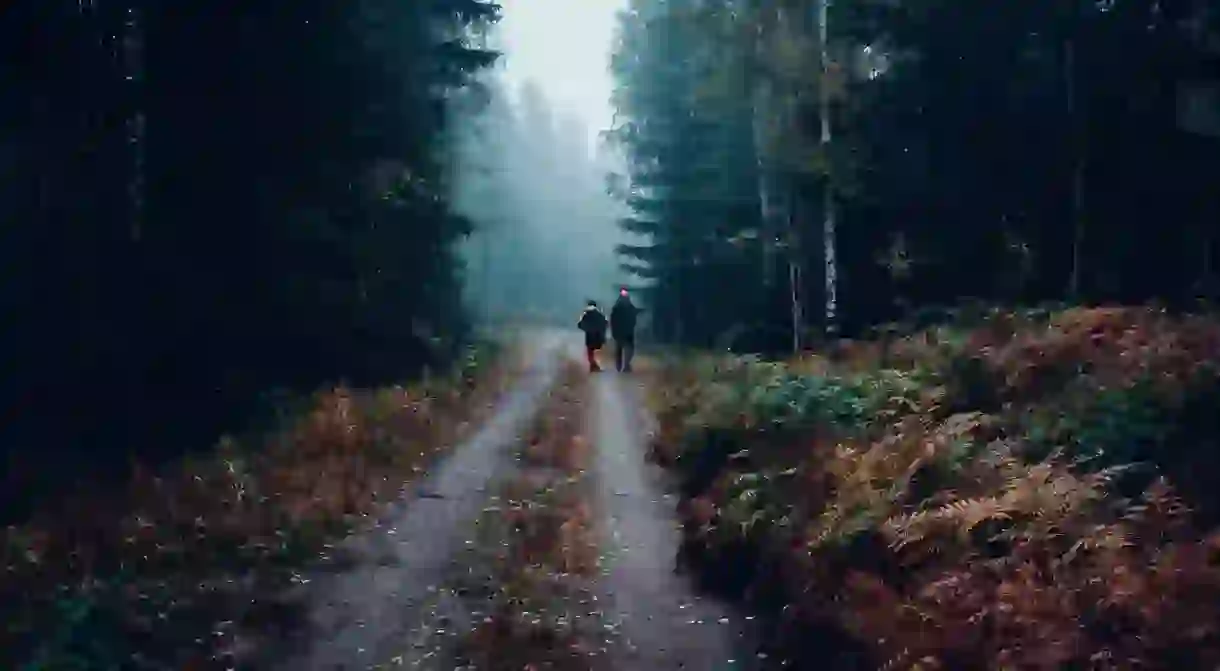12 Truths About Growing Up in Finland

Finland is a great place to grow up, voted by NGO Save the Children as the third-best country in the world for children, thanks to its excellent education system, great taste in pop culture, and a sense of freedom and independence. But ask any Finnish person and they’ll look back on their childhood with a mixture of nostalgia and groans. These are some of the strangest and most memorable things about growing up in Finland, both the good and the bad.
Candy day is the best day
When it was discovered that Finnish children had incredibly bad teeth, due to excessive sugar consumption, parents were encouraged to give them candy only once a week, usually on the weekend. This meant that Finnish children spent the entire week looking forward to ‘candy day’, which usually consisted of a trip to the pick ’n’ mix section of the supermarket. Salty liquorice is an especially nostalgic taste for Finns; it is such an acquired taste that eating it from childhood is the only way to fully appreciate it.

There are no ‘snow days’
In some places, a few inches of snow are enough to grind the entire country to a halt and close down schools, much to the joy of students. No such luck for Finnish children. With several feet of snow covering the ground for months at a time, children not only still have to go to school, they have to go outside for break time and PE. Perhaps the only time in history when Finnish children did get a snow day was a single day in 1999, when the temperature dropped to -50 degrees Celsius.

No shoes in school
Much like Japan, in Finland it is custom to take off your shoes indoors, and that includes schools. But unlike in Japan, where indoor slippers are provided, Finnish schoolchildren have to spend the entire day walking around in their socks!
A love of heavy metal
Heavy metal is an incredibly niche musical genre in most places, and often unfairly associated with juvenile delinquency. In Finland, the global home of heavy metal, it is so mainstream that children grow up listening to it on the radio or from their parent’s music collection. There is even a Finnish heavy metal band for children, that dresses up in dinosaur suits.

The Moomins are traumatising
The Moomins are Finland’s most beloved native franchise, and their adorable faces have completely taken over the country. All Finns have fond memories of watching the Moomin cartoons and reading the books, but the series has had a few traumatising moments too. Fans who grew up with the popular ’90s anime remember a famous scene where the terrifying Groke first appears – it was so scary, some fans still have nightmares about it to this day.

Winter suits look silly
When in Finland during winter, you’ll notice most small children wearing full-body winter jumpsuits, often with ugly patterns, to keep warm. Parents put these on children to protect them from the Finnish winter, as difficult as it may be to dress a toddler in so many layers – however, looking back at the photos as an adult can be a little embarrassing.

Ice cream all the time
Ice cream is more than just a summer treat in Finland. Finns consume more ice cream per capita than any other country in Europe, at 14 litres per person each year. This means that even during the coldest parts of winter, Finnish children can always find ice cream in the freezer or stop by the local kiosk for a treat.

Holidays are spent at grandma’s summer cottage
The Finnish tradition of spending summers at a lakeside cabin is still going strong today, and Finnish children spend a large portion of their summer holidays either at their parent’s cottage or one belonging to relatives. There they get to enjoy outdoor activities – including sailing, swimming, fishing, berry picking, and cooking on an open campfire. It’s a lot of fun for small children, but once Finns reach their grumpy teenager phase, summers at grandma’s cottage without television or internet start to become boring. Instead, they long for the day when they and their friends can get a driver’s license so they can spend the summer cruising around.

Skiing during PE
Even when the school playground is covered in snow and ice, PE class isn’t cancelled. Instead, Finnish children are some of the only students in the world who get to learn skiing during their PE lessons. It’s a physically exerting sport, but one that is good for exercise and for preparing young Finns for travelling and skiing during the Finnish winter.

Sleeping in a box
Finns won’t remember this, but there is a good chance that, as infants, they spent their first few months of life sleeping in a box. The state-issued Kela boxes are provided to all Finnish parents with essential baby supplies. The box itself can also be converted into a cot, and it isn’t unusual for parents to use it as their child’s first bed.
The forest is your playground
Finnish children are lucky to grow up in a country that is still almost entirely covered in forests and natural landscapes, making the perfect childhood playground for exploring and fueling the imagination. Most Finns have a very active childhood, filled with ice skating, sledging, and playing pesäpello (Finnish baseball).

Walking to school alone, in the dark
Many parents today seem too overly protective of their children and are terrified of leaving them alone for a second. While some Finnish parents are becoming ‘helicopter parents’, it is still such a safe country that children as young as seven can make their own way to and from school (or at least the school bus) by themselves – even when it’s dark outside and the temperature is below freezing. This instills a greater sense of independence and responsibility in Finnish children from a young age.













